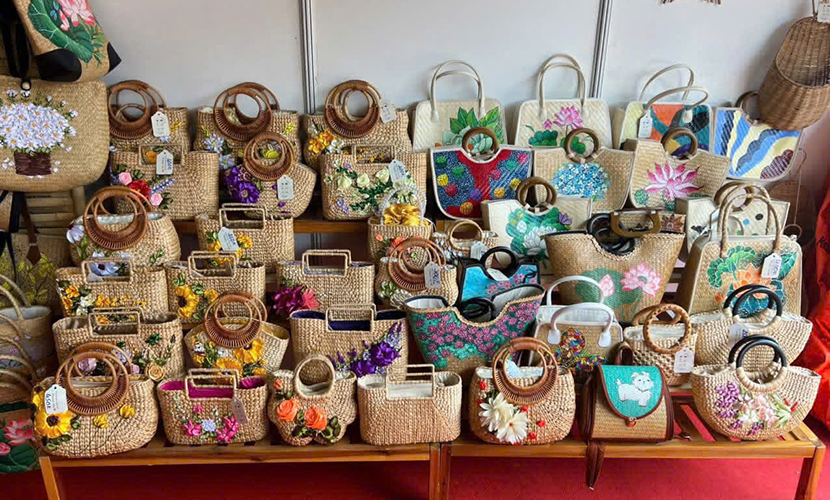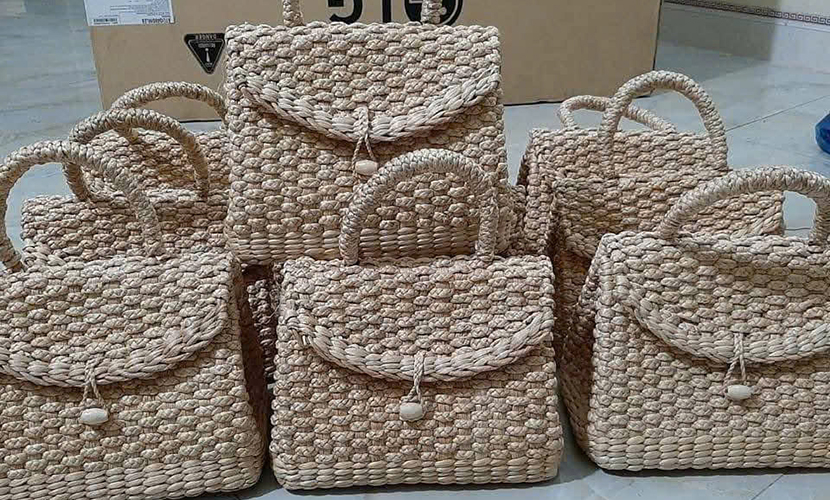
Recently, Vietnam has signed new-generation free trade agreements (FTAs) with many countries in the world. They open golden opportunities for Vietnam’s handicraft products expand the markets.
In the first eight months of 2025, the export value of Vietnam’s handicraft products reached $574 million. This value was up 5.4% compared to the same period last year. The main handicraft exports consist of rattan, bamboo, sedge, and mat products.
The export market for Vietnam’s handicraft products is increasingly expanding. The United States is the largest import market, which accounts for 35% of annual export value. In addition to traditional markets, Vietnamese handicrafts are gradually making inroads into new markets such as Russia, South Korea, Australia, and Taiwan. To date, Vietnamese handicrafts are present in 163 countries and territories worldwide.
International consumer trends are clearly shifting toward environmentally friendly products with cultural and local elements that meet social responsibility standards. Orders placed on a made-to-order basis have increased significantly. However, they come with increasingly strict requirements regarding design, quality, delivery capability, and traceability.

Vietnam’s handicraft products
Most export-standard products originate from renowned Vietnamese traditional craft villages. Vietnam currently has many craft villages, such as Bat Trang (ceramics), Van Phuc (silk), Phu Vinh (rattan and bamboo weaving), and Dong Ky (wooden handicrafts).
Mr. Nguyen Minh Tien is the Director of the Agricultural Trade Promotion Center, Ministry of Agriculture and Environment. He said that the process of signing free trade agreements has provided important opportunities for Vietnam’s handicrafts. These opportunities allow them to consolidate traditional markets while expanding into potential new ones.
Ms. Ha Thi Vinh is the Chairwoman of the Hanoi Handicraft and Craft Village Association. She affirmed: “The FTAs that Vietnam has signed are a golden opportunity for Vietnam’s handicraft products to reach the global market.”
The EVFTA is seen as having a “dual” impact on craft village enterprises. It expands market opportunities while providing access to resources like modern technology, capital, and management.
While there are opportunities, exporting traditional craft products also comes with significant challenges. In particular, complying with the strict requirements of FTAs can be demanding. Sophisticated markets such as the EU have strict requirements regarding rules of origin, quality standards, social responsibility, and sustainable development. This compels Vietnamese enterprises to innovate their business strategies, enhance management capacity, and proactively integrate internationally.

Vietnamese handmade straw bags
“Participating in FTAs means that enterprises must overcome a series of technical barriers. These include environmental standards, noise, and workers’ living conditions. Products must be ‘clean’ to meet export requirements,” emphasized Ms. Ha Thi Vinh.
Mr. Le Ba Ngoc is the Vice Chairman of the Vietnam Handicraft and Wood Industry Exporters Association. He noted that Hanoi’s enterprises currently export nearly $80 million annually. Of this, the rattan and bamboo sector contributes about $78 million.
If businesses cannot prove their raw materials are clean and that production meets emission-reduction standards, maintaining market share will be very difficult. Compliance should align with the goal of net-zero emissions by 2050.
International customers now require enterprises to prove a gradual reduction in emissions over time. For example, if emissions were 50 tons of carbon at the beginning of the year, they must be reduced by year-end. To achieve this, businesses must control the entire production chain, from cultivation, transportation, and fuel consumption to electricity usage.
The issue of raw materials goes beyond simply having cultivation areas. It involves creating a sustainable and transparent production ecosystem at every stage to meet global standards.
According to the Hanoi Department of Industry and Trade, in the near future, the implementation of FTAs will enter a phase of stronger commitments. Therefore, the city will continue to focus on programs that help businesses take full advantage of tariff incentives, market information, and rules of origin. At the same time, authorities will closely monitor businesses to promptly resolve difficulties and provide support within their capacity.
In addition, efforts will include creative product design and recognition of outstanding products. They will also support applying science and technology to improve productivity, quality, and environmental protection. In particular, the city will emphasize trade promotion and brand registration. It will also focus on media support, exhibitions, and the development of e-commerce platforms for handicrafts.

Vietnamese rattan boxes
To effectively tap into the EU market, enterprises and craft villages need to proactively understand technical barriers. They must also continuously innovate and enhance internal technological capacity to meet stringent standards. Ms. Ha Thi Vinh said the Association will strengthen trade promotion, focusing on potential markets where Vietnamese craft products still have room for growth.
The Association also proposed that the city increase resources to support foreign trade promotion delegations. This includes participation in leading international handicraft fairs in Germany, Hong Kong (China), France, and major domestic fairs such as the Hanoi Gift Show and Lifestyle Vietnam. These are crucial gateways for bringing Vietnam’s handicraft products to international customers.
However, promotion activities need a clear strategy, focusing on key “leading” enterprises with strong potential to create a ripple effect. At the same time, technical support services should be enhanced, market information updated, and geographical indications built and protected.
Industry experts also noted that FTAs are expected to bring a major turning point for Vietnam’s handicraft products. To seize this opportunity, enterprises must change both their production mindset and market approach, strengthening collaboration to form robust supply chains.
Vietnam’s handicraft sector can elevate its value only by developing a professional export enterprise network. This will help expand markets and contribute sustainably to the country’s foreign exchange earnings.
Vietnamese source: https://congthuong.vn/ftas-mo-co-hoi-vang-cho-thu-cong-my-nghe-ha-noi-426138.html
